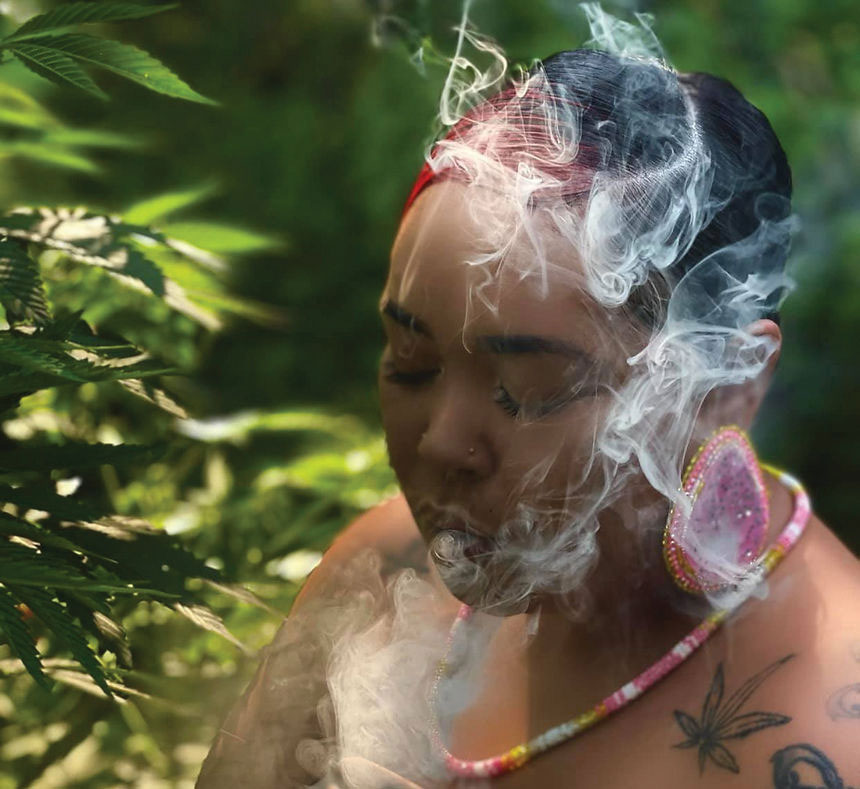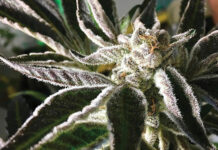Hemp has always been of the land. So too have been the tribes across the American continents who tended and partook of the bounty for millennia. After a little interruption called colonization, it’s time to put hands back in the dirt, at scale. So believe the people of the Shinnecock Indian Nation.
Having fought through spiritual repression, enslavement and the stealing of ancestral lands, this tribe in New York state has found that modern cannabis production is the perfect complement to traditional herbal wisdom.
I spoke with my new pal, CMO of the company Shinnecock Hemp Growers, Rainbow Chavis, by phone this week to help me understand the connections between Indegenous traditions and the modern world of commercial cannabis and hemp.
“So things that grow around us just in the wild, you know, honeysuckle or red raspberry, or we have sassafras, mugwort and comfrey and burdock, [all herbs] that naturally grow here—to know what to do with them and what they will help you with, that was a big part of our upbringing,” Rainbow said.
It makes one wonder, now that cannabis and hemp are being legalized in various ways across the country, why the Indigenous wisdom of the people of the lands we live on hasn’t been used to the common benefit before. That is to say, imagine if cannabis production was first legalized on tribal reservations rather than gambling. Afterall, one has its roots in the spirit and land of American Indians, and one has its roots in the decay and destruction of Indigenous nations.
“You know, our ceremonies were banned,” Rainbow reminded me. “Not too long ago, [native people were] thrown in jail for practicing any kind of spiritual ceremony.”
As Rainbow paraphrased it: “‘If we make their medicines controlled substances [then it’s] going to be harder for them to get it or to carry it, or to grow it, or to anything.’”
With a little historical context, it starts to become clear why cannabis, the spiritual medicine especially in use by Western and Central American Indegenous peoples, was made very illegal. Classified as a Schedule One drug to remind you, dear reader. Most illegal. Peyote was more traditional for tribes in the Shinnecock area, as mushrooms were in the Northwest, but of course these days cannabis is used spiritually across the world.
Legalization made it possible for people curious about the spiritual side to openly find out more than was possible when the threat of jail loomed.
Members of the tribe, like Rainbow, who had the understanding of growing conditions for local flora saw the opportunity to build an industry from the wisdom of their ancestors.
“Of course no one wants to give land back to the natives, especially out here [in the Hamptons] because we live in a very, very high price area with a lot of wealthy people,” said Rainbow. “The land is really worth a lot of money,” as much as $1 billion, according to a New York Times estimate.
The tribe has been successful in buying back some of the ancestral lands that had been illegally sold when a 1,000 year lease to the tribe was broken by the state of New York in 1859. By playing the game of capitalism—because we all have to, right?—tribes around the country have found ways to rebuild their culture. For the Shinnecock, looking west to Oakland and the justice-focused work of Oaksterdam University provided a way to match the know-how of the tribe’s people with the burgeoning cannabis and hemp industries.
“I did both of the [Oaksterdam] courses in the business of cannabis and the horticulture of cannabis … all online,” Rainbow told me. “[I]t was a great experience, and I loved Oaksterdam. And I learned so much, and I’m so appreciative of their whole school.” The nascent Shinnecock Hemp Growers was proclaimed the best business plan in their cohort, she told me.
“We call that top of the class,” I said.
“Yep, top of the class,” she laughed. “We were very proud of that.”
Originally posted on EastBayExpress.com








